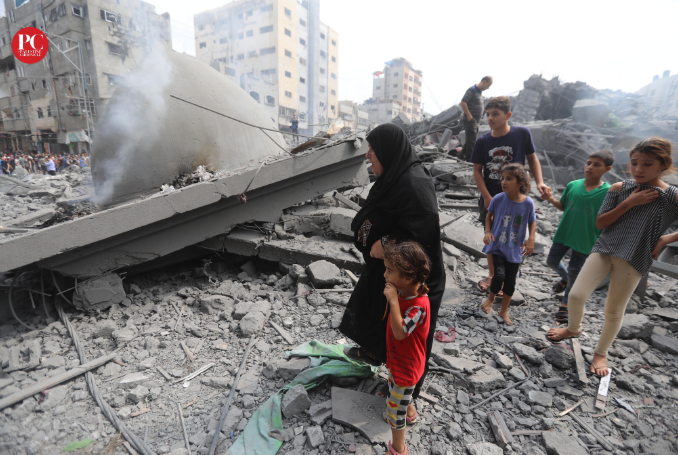Jeremy Salt writes in Palestine Chronicle 25 August 2024
Every genocide is different from the one before. Organized extermination is their similarity, but no two genocides are the same. They are not unique except in themselves.
In fact, history is in part a running sequence of genocides or ‘mass killings’ or ‘extermination events,’ if you can’t make up your mind how to describe them. There is nothing unusual about them. It is what we “human animals” – to apply Yoav Gallant’s pejorative description to the reality of what we all are – regularly do to each other.
Genocides (to use the word) are usually described as such only after the event. They are never stopped in progress, a curiosity in itself. It is not that they can’t be stopped. They aren’t stopped because the people who could stop them choose not to stop them, for different reasons on every occasion.
How is the current genocide in Gaza different from previous genocides? Does it have a specific character, set against the benchmark of the ‘industrial’ genocide of Jews by the Nazis. It was its assembly-line nature, not numbers that defined that particular event. Otherwise, a far greater number of human beings were killed in other genocides.
The European genocide of Africans in the 19th century was a long-running affair that took the lives of perhaps 60 million people. Black lives were hardly worth counting at the time, by Europeans, and now there are only estimates that 10-12 million died just in King Leopold’s ‘Congo Free State.’
Of course, ‘died’ is a completely dissociative word to describe the gruesome reality of how they ‘died.’
The figures in multiple millions are stamped on the map wherever European armies arrived, to stay. This is not to stay that the people in these territories did not butcher each other before the Europeans arrived. They did but the Europeans brought with them far more effective means of controlling and killing, in as large a number as might be necessary to ‘tame’ the locals.
We know about these events from what we can read or see in documentaries. We have the written word, accurate or not, and the artist’s impression, of Gordon standing bravely on top of the stairs in Khartum as the wild-eyed savages rush up at him with spears in hand. The camera in war photography was first used in the Mexican-American War of 1847 but images of dead bodies on the battlefield were not shown until the American Civil War. We see them, but not in the way we are able to see dead bodies now.
Almost everyone old enough to remember the Second World War is now dead. Even a child born in 1939 would have hazy memories and a child born in 1943-45 would have none at all so even people now in their 80s would have no direct memory of the war but being closer to it, in time, and more directly affected by it in many ways, they might when young have been more driven to think, read and write about it.
Since that time the number of mass killings/genocides has proliferated. As bad as they were at the time, most left hardly a dent in history. Who except the victims now remembers Setif, Guelma, and Kharrata, May 8, 1945, west of Constantine, Algeria, where 6000-45,000 people were killed by French ‘authorities’ and pied noir French colonists in retaliation for ‘riots’ in which more than 100 settlers were killed? If no real effort was made to count the Algerian dead, that was because their lives or deaths were of little account to the colonial authorities, and for official purposes the lower the number the better.

